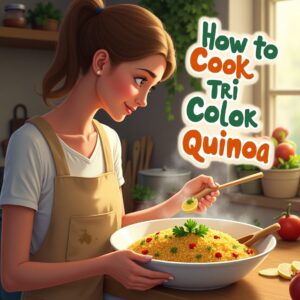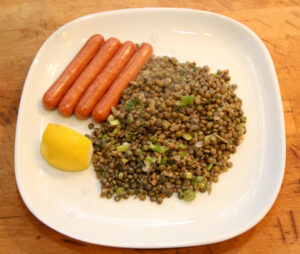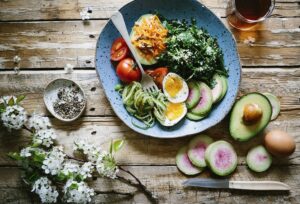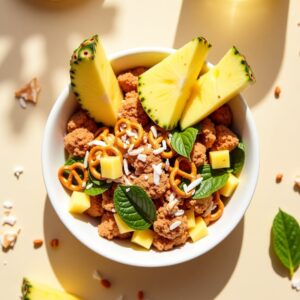How to Cook Tri Color Quinoa

Tri-color quinoa is one of those pantry staples that feels a bit fancy but is incredibly simple to work with. If you’ve ever asked yourself, “How to cook tri color quinoa?”—you’re not alone. Even as someone who’s spent years tinkering in the kitchen, I still remember the first time I cooked quinoa. It turned out mushy. Yikes. But once I figured out a few tricks, it became one of my go-to grains. Whether you’re prepping a hearty salad, a warm breakfast bowl, or a satisfying side dish, knowing how to nail the texture makes all the difference.
What Is Tri Color Quinoa?
Before diving into cooking methods, let’s clarify what exactly tri-color quinoa is. It’s a blend of white, red, and black quinoa. Each color has its own personality. White quinoa is soft and fluffy. Red quinoa is a bit chewier. Black quinoa has a subtle earthiness and a firm bite. When combined, they make a colorful, nutty, protein-rich mix that stands out in both flavor and nutrition.
Why Choose Tri Color Quinoa?
Tri color quinoa isn’t just pretty on a plate—it’s also packed with plant-based protein, fiber, iron, and magnesium. It’s gluten-free and easy on the stomach. Plus, it’s a complete protein, meaning it contains all nine essential amino acids. Not bad for a humble seed, right?
Rinse or Regret
First lesson? Always rinse your quinoa. Tri-color quinoa, like its individual counterparts, comes coated with saponins—a natural compound that can make it taste bitter or soapy if not washed off. I usually pour the quinoa into a fine mesh sieve and rinse it under cold water for about a minute while rubbing it gently with my fingers.
The Perfect Tri Color Quinoa Water Ratio
Here’s where a lot of folks go wrong. They drown the quinoa or don’t give it enough water. For tri-color quinoa, the sweet spot is usually 2 cups of water for every 1 cup of dry quinoa. Some people go with 1.75 cups of water, and that’s okay too if you want it less fluffy.
How to Cook Tri Color Quinoa on the Stove
- Rinse 1 cup of tri-color quinoa.
- Combine with 2 cups of water and a pinch of salt in a saucepan.
- Bring to a boil, then reduce to a low simmer.
- Cover and cook for about 15 minutes, or until the water is absorbed.
- Let it sit off heat for 5 minutes with the lid on.
- Fluff with a fork and enjoy.
This method gives you quinoa that’s fluffy with just a touch of chew.
Cooking Tri Color Quinoa in a Rice Cooker
If you’re the kind of person who likes to set it and forget it, a rice cooker is your friend. Use the same water-to-quinoa ratio (2:1), add a pinch of salt, and let the machine do its thing. I use the white rice setting on mine, and it turns out perfect every time.
Pressure Cooker/Instant Pot Method
You can also cook tri-color quinoa in a pressure cooker. Here’s how:
- 1 cup of rinsed tri-color quinoa
- 1.25 cups of water
- Pinch of salt
Set the Instant Pot to “Manual” for 1 minute at high pressure. Let it naturally release for 10 minutes. Fluff and serve.
Microwave Method (Yes, Really)
This one’s a bit unconventional, but if you’re tight on time or stove space, it works.
- Rinse 1 cup of quinoa.
- Mix with 2 cups of water in a large microwave-safe bowl (bigger is better to avoid overflow).
- Cover loosely.
- Microwave on high for 6 minutes, stir, then microwave for another 2-4 minutes.
- Let it sit for 5 minutes, fluff, and serve.
Flavor Boosters: Because Plain Quinoa Gets Boring
Let’s be honest—quinoa on its own can taste bland. Here’s how to jazz it up:
- Cook it in broth instead of water.
- Add a bay leaf, garlic clove, or onion slices while it simmers.
- Toss in spices like cumin, turmeric, or chili powder.
- Finish with a drizzle of olive oil or a squeeze of lemon juice before serving.
Sometimes I even cook tri-color quinoa in coconut milk when I’m going for a tropical vibe. It pairs so well with mangoes or grilled tofu.
Storing and Reheating
Cooked tri color quinoa stores like a champ. Let it cool, pop it in an airtight container, and keep it in the fridge for up to 5 days. You can also freeze it for a month or two.
To reheat, microwave it with a splash of water or broth to bring it back to life. Stir halfway through to heat evenly.
Creative Ways to Use Cooked Tri Color Quinoa
Once you’ve mastered the base, the fun begins. I use tri-color quinoa in:
- Salads with cherry tomatoes, cucumber, olives, and feta
- Breakfast bowls with almond milk, nuts, and berries
- Stuffed bell peppers or zucchini boats
- Mixed into soups or stews as a protein booster
- Replacing rice in burrito bowls or stir-fries
Sometimes I even toss leftover quinoa into my scrambled eggs. Sounds odd, but it works!
Tri Color Quinoa vs. White Quinoa
While white quinoa is softer and cooks faster, tri-color quinoa offers a nuttier flavor and a heartier texture. It’s more photogenic, too—those specks of red and black make any dish pop.
Nutrition Breakdown (Per 1 Cup Cooked)
- Calories: ~220
- Protein: 8 grams
- Fiber: 5 grams
- Iron: 15% of RDA
- Magnesium: 30% of RDA
It’s a solid option if you’re plant-based or just looking to eat cleaner.
Final Thoughts
Learning how to cook tri color quinoa isn’t hard once you know the tricks. It’s a forgiving grain, and with a little practice, you’ll be turning out fluffy, flavorful batches in no time. Whether you’re adding it to salads, scooping it into a bowl with veggies and hummus, or just eating it plain with a sprinkle of salt, tri-color quinoa brings color, texture, and nutrition to your table.
FAQs
Q: Should I soak tri color quinoa before cooking?
A: Not necessary, but you can soak it for 15-30 minutes to reduce phytic acid and improve digestibility.
Q: Can I toast quinoa before cooking?
A: Absolutely. Toasting enhances its nutty flavor. Just rinse, dry slightly, and toast in a dry skillet before boiling.
Q: Why is my quinoa mushy?
A: You probably used too much water or didn’t let it rest before fluffing.
Q: Is tri color quinoa healthier than white quinoa?
A: Nutritionally, they’re similar. Tri-color has a bit more fiber and flavor, thanks to the red and black varieties.
Q: Can I mix quinoa with rice?
A: Yes! They cook well together and balance each other in texture.
Share this content:

A seasoned chef with over 10 years of experience in New York. I passionately share my journey and healthy, flavorful recipes online.













Post Comment